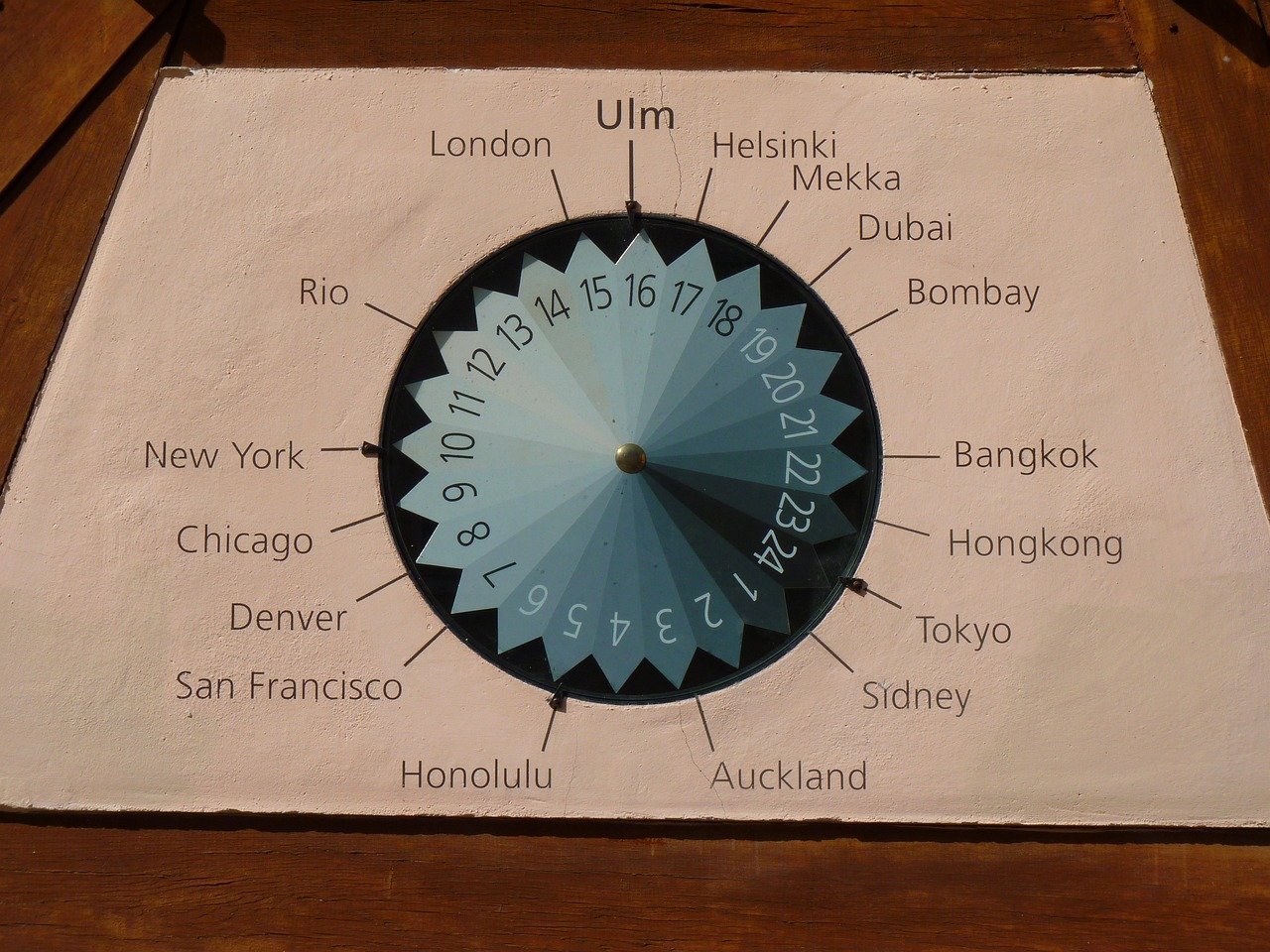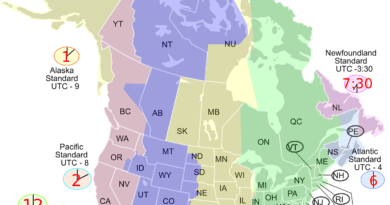Time Zones
Whether you’re a seasoned traveler or a rookie ready to explore the world, you’ll need to navigate the fascinating, and at times befuddling, world of time zones. This article “Time Zones” is your essential guide for understanding the intricacies of daylight savings, how time zones work, and tips on beating that inevitable jet lag. As an adventurer, your thirst for knowledge is understandable and this covers everything you need to grasp the concept of time as you cross countries and continents, ensuring that nothing as mundane as the clock stops you from quenching your wanderlust.
Understanding Time Zones
One of the most fascinating aspects of our shared human experience is the concept of time. It’s different yet the same for everyone. Time zones are crucial in helping us understand and manage our time across different regions of the world, and in this article, we will delve deep into them.
Concept of Time Zones
Essentially, a time zone is a region that observes a uniform standard time for legal, commercial, social, and other purposes. The Earth, rotating on its axis, is divided into 24 roughly equal time zones, each about 15 degrees of longitude wide. These time zones ensure that noon, when the sun is at its highest in the sky, is roughly the same time everywhere within the same time zone. It simplifies timekeeping and allows us to keep track of time in different areas around the world.
Elements and roles of Time Zones
Each time zone is defined by the degree of longitude at the center of the zone, and it encompasses places that are within 7.5 degrees of longitude on either side of the center line. In theory, time zones are precisely one hour apart, but the shape of countries and their borders make the actual time differences broader. Typically, the further east you move, the later the clock, and vice versa. Time zones play a crucial role in our day-to-day lives, be it in travel, communication, business, or just understanding the world better.
History and Origin of Time Zones
Understanding the current structure of time zones requires a bit of time travel. So, let’s take a journey back in history.
The context behind the concept
Before the late 19th century, time was local and was based on each location’s sundial reading, leading to a lot of confusion, especially for railway systems and schedules. In the United States, for instance, there were about 300 variations of local time by the 1880s. The idea of time zones was proposed to organize timekeeping more neatly and practically.
Major historical milestones of Time Zones
The person widely credited with the concept of time zones is Sir Sandford Fleming, a Canadian railroad engineer. He came up with the idea in 1878, and it was formally adopted in 1884 during the International Meridian Conference in Washington DC. This is when the Prime Meridian (0 degrees longitude) was set at Greenwich, United Kingdom, forming the basis for the global time zone system we use today.

Standard Time Zones of the world
The diversity of time across the globe might seem overwhelming, but let’s break it down.
Details on the 24 Standard Time Zones
The time at the Prime Meridian (Greenwich Mean Time – GMT) is used as a reference point. Rewind 24 hours, the world is divided into 24 time zones, each 15 degrees of longitude apart. However, due to different country borders and their choices, the lines aren’t as straight as they might be in a perfect world.
Geography and countries within these time zones
Each time zone includes a diverse group of countries. For instance, Pacific Standard Time (PST) includes the western part of the United States and Canada, whereas India Standard Time (IST) only includes India. Some large countries, such as the United States and Australia, span multiple time zones. On the other hand, China, a country that geographically spans several time zones, interestingly, uses only a single time zone (China Standard Time – CST).
Daylight Saving Time and Time Zones
Now, let’s look at an interesting tweak in timekeeping – Daylight Saving Time (DST).
Understanding Daylight Saving Time
DST involves temporarily adjusting clocks forward by an hour during the warmer part of the year, so that evenings have more daylight and mornings have less. The rationale is to make better use of daylight and save energy.
Effects on time zones
DST can complicate time zone calculations because not all places observe it, and those that do may begin and end DST on different dates. For example, in the United States, DST starts on the second Sunday in March and ends on the first Sunday in November.
Controversies surrounding Daylight Saving Time
Despite its advantages, DST has its share of detractors. Critics argue it disrupts human circadian rhythms, reduces productivity, and could even cause health issues. Several places, including Hawaii and most of Arizona in the US, do not observe DST at all due to these potential downsides.

Calculating Time Differences
Now that we’re aware of the components of time zones let’s look at some techniques for managing them.
Techniques for calculating time differences
Calculating time differences between time zones is a useful skill, especially for travelers and those doing business internationally. Knowing that each time zone is typically an hour apart from its neighbors is helpful. To find the time difference, subtract the time zone’s offset from GMT from that of the other time zone.
Tools and resources for time difference calculations
Although calculating time differences isn’t overly complicated, tools can simplify the process. World clocks, time zone converters, and smartphone apps can provide exact times in different parts of the world and help to calculate time differences more effectively.
Effect of Time Zones on Travel
You might be wondering how all this talk about time zones impacts you on a personal level, especially for travel. Let’s delve in.
Jet lag and Time Zones
Traveling across several time zones can disrupt your body’s internal clock, leading to a state known as jet lag. Symptoms include fatigue, difficulty concentrating, and digestive problems. Understanding time zones can help you counteract jet lag by adjusting your schedule gradually before your journey.
Planning travel itineraries around Time Zones
While planning your adventure, especially if it involves crossing multiple time zones, being aware of the time difference can help map out your itinerary. It can guide you on when to rest, avoid scheduling activities right after arrival, and when to adjust your watch.

Impact of Time Zones on International Business
Moving to the context of business conquests, let’s explore how time zones affect international operations.
Coordination of international operations
Business operations that span across different time zones require careful planning and coordination. From scheduling meetings to managing delivery and deadlines, time zones play a big role. Having a common working time and setting a sequential workflow ensures seamless functioning.
Effect on communication and scheduling
Communication is a cornerstone of successful businesses. When operating across time zones, companies must consider the local time of partners, clients, or employees before scheduling calls or meetings. This sensitivity to time zones ensures no one is caught off guard or expected to interact during their off-hours.
Time Zones and Culture
The way we perceive, respect and manage time has a broader cultural impact too.
Cultural aspects tied to time zones
Time zones even tie into local customs and traditions. The Islamic holy month of Ramadan, during which followers fast from dawn until dusk, depends on the sighting of the moon and thus varies across time zones. In regions near the poles, where daylight hours can be extremely long or short, local customs must adapt to these unusual patterns.
Festivals and events influenced by time zones
New Year’s Eve, for example, extends over a 24-hour period due to the differing time zones. It’s a shared global experience, but celebrated at different times. The same is true of many festive events celebrated worldwide.

Modern Technology and Time Zones
Let’s look at how technology has intervened to make managing time zones more straightforward.
Technology’s role in managing time zones
Thanks to modern technology, dealing with time zones has never been easier. Devices such as smartphones and computers automatically adjust time based on location. Multiple alarms can be set up for different time zones, and digital calendars can schedule events in the time zone of your choice.
Innovations making it easier to navigate time zones
Advanced software solutions and applications enable real-time conversion of time zones, making international operations and communications more efficient. For jet-setters, smartwatch features help to adjust to different time zones and even aid in combating jet lag.
Interesting Facts and Curiosities about Time Zones
To tie up this comprehensive guide, let’s look at some trivia and quirks related to time zones.
Fascinating anomalies in Time Zones
While most time zones vary in one-hour increments, some differ by 45 or even 30 minutes. For instance, the Indian Standard Time (IST) is 5 hours 30 minutes ahead of GMT. Another anomaly is China, using a single time zone despite its vast geographical spread.
World records and unique facts associated with Time Zones
Believe it or not, but time zones also hold intriguing records. The title for the most time zones in one country goes to France because of its numerous overseas territories. And the island of Diomede in the Bering Strait has a 21-hour time difference despite being only 3 miles apart.
So, there you have it! A comprehensive rundown of time zones. Whatever your lifestyle and profession, understanding time zones can aid your productivity, efficiency and ensure a seamless global connection. Remember, no matter where you are or where you’re going, time is always on your side – once you understand how to navigate time zones.




